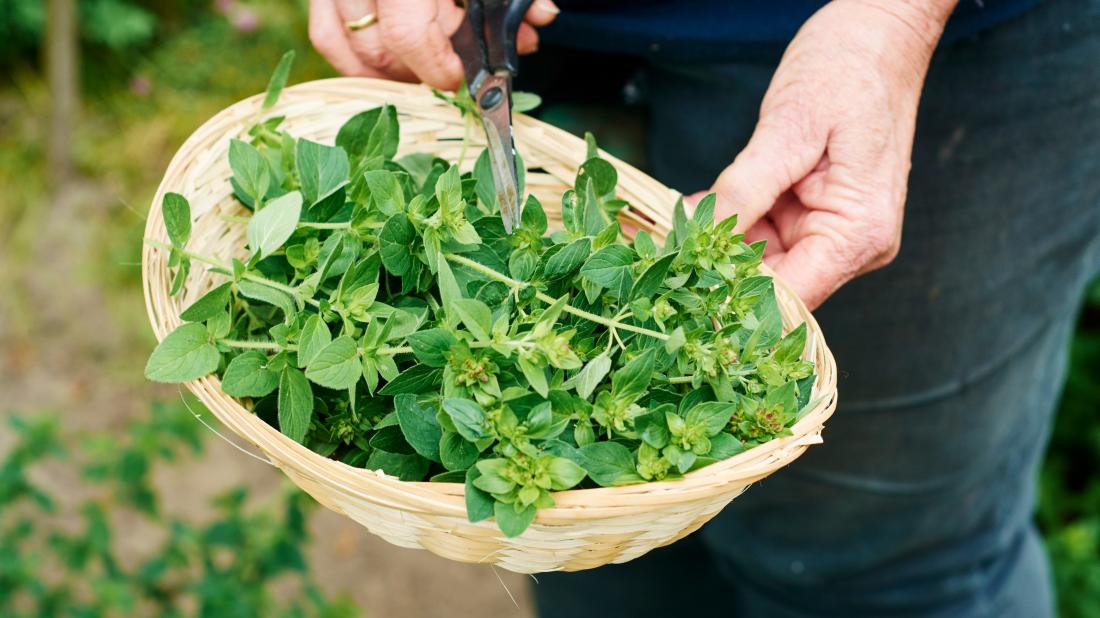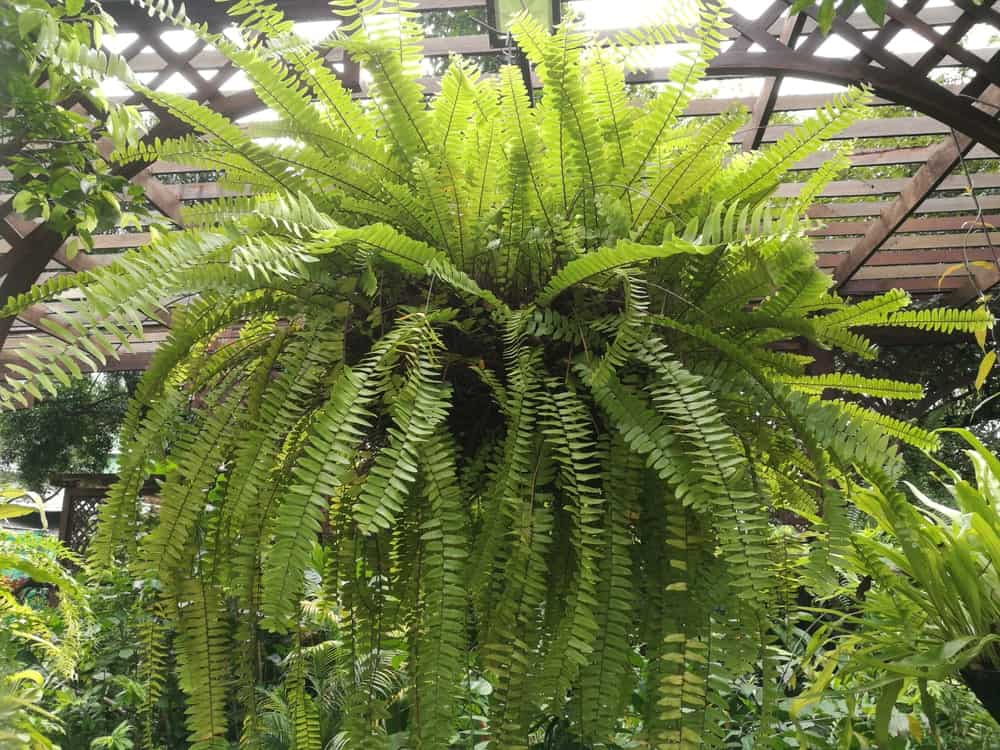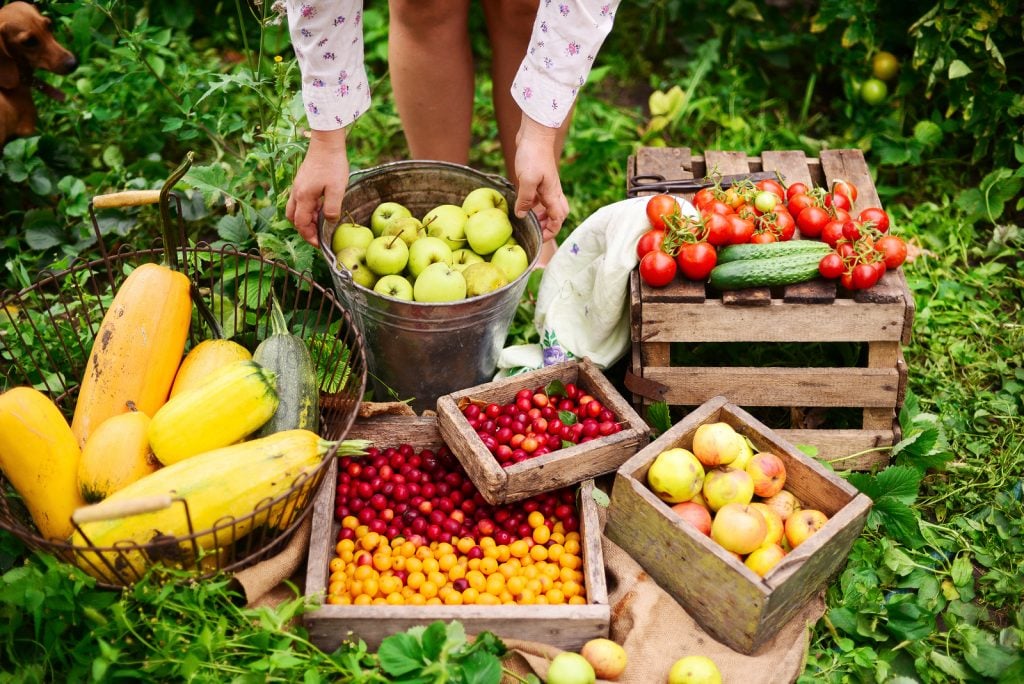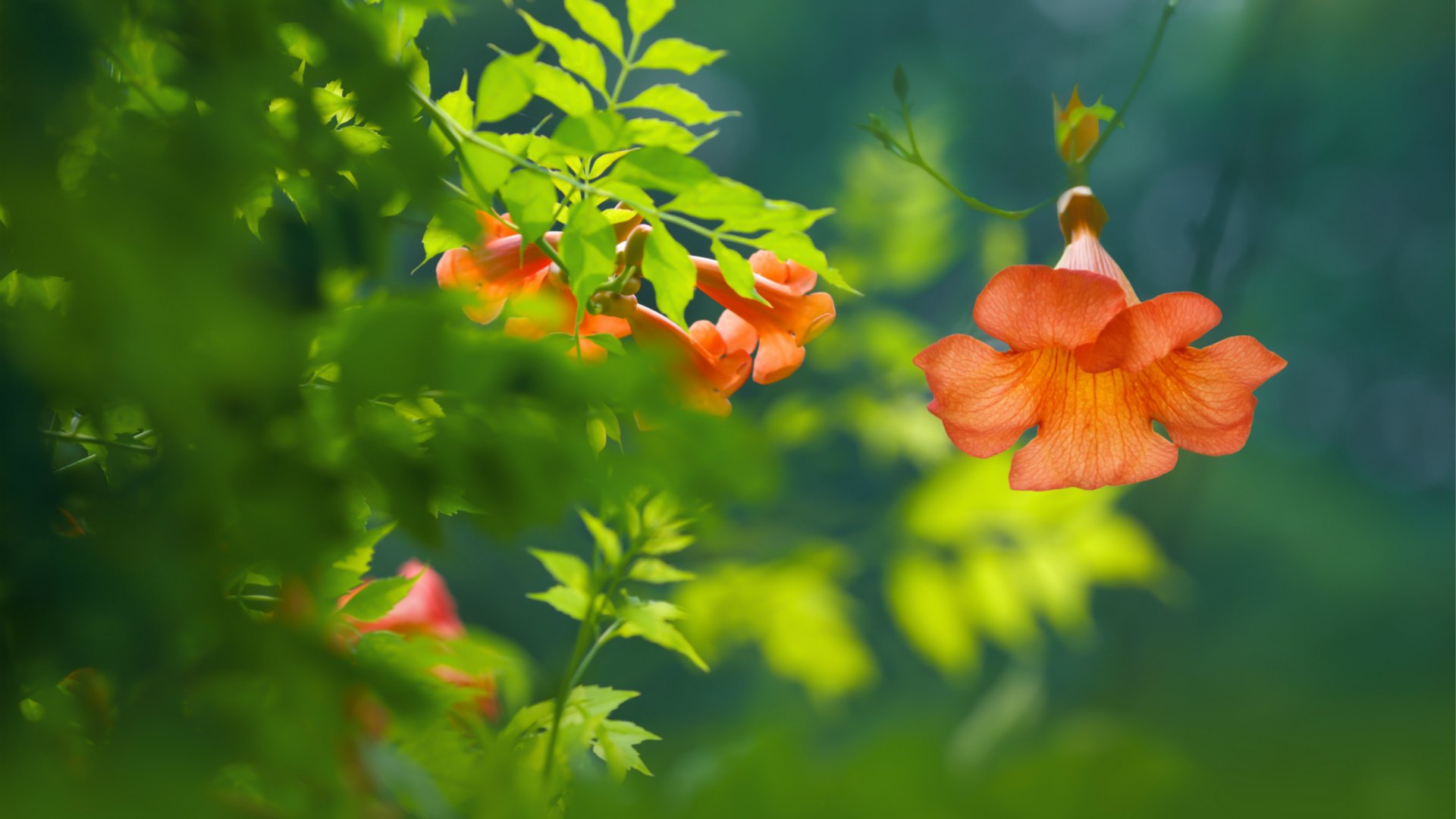Growing and Caring for Kniphofia ‘Red Hot Poker’
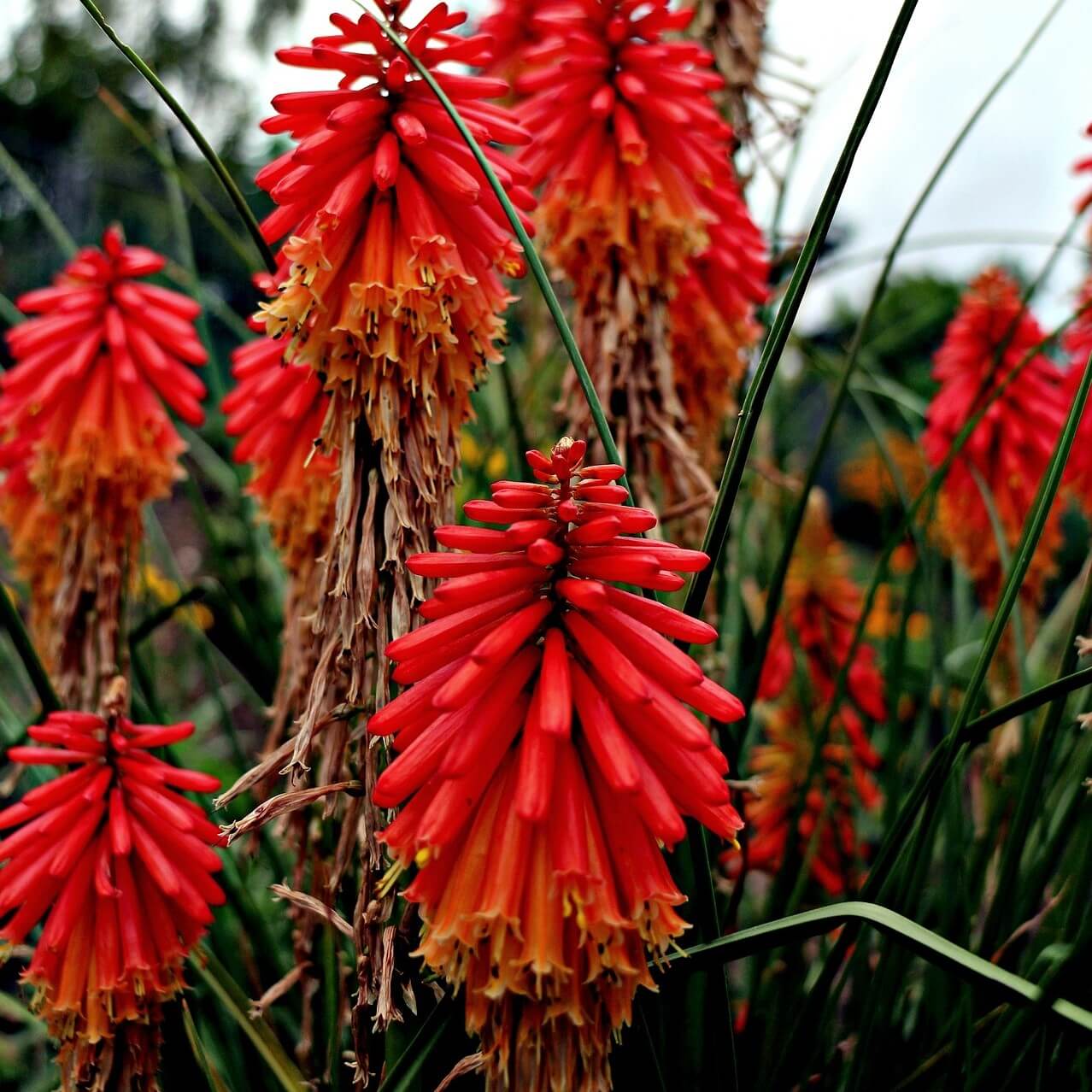
Table of Contents
If you are looking for a plant with bright colours that can add a splash of colour to your space? Kniphofia is the right choice for you! Kniphofia, also known as red hot poker, the plant is not just about a pretty face; it is known for its low maintenance, ability to attract pollinators, long blooming time, and exceptional medicinal properties.
In this blog, we will explore everything one should know about the red poker plant, how to grow and care for it and enjoy most of it. From planting a red poker plant to watering and fertilizing to pest control, this blog is going to help you make your garden colourful with this fiery beauty.
So, get ready to plant this versatile red beauty in your garden!
What is Red Hot Poker?
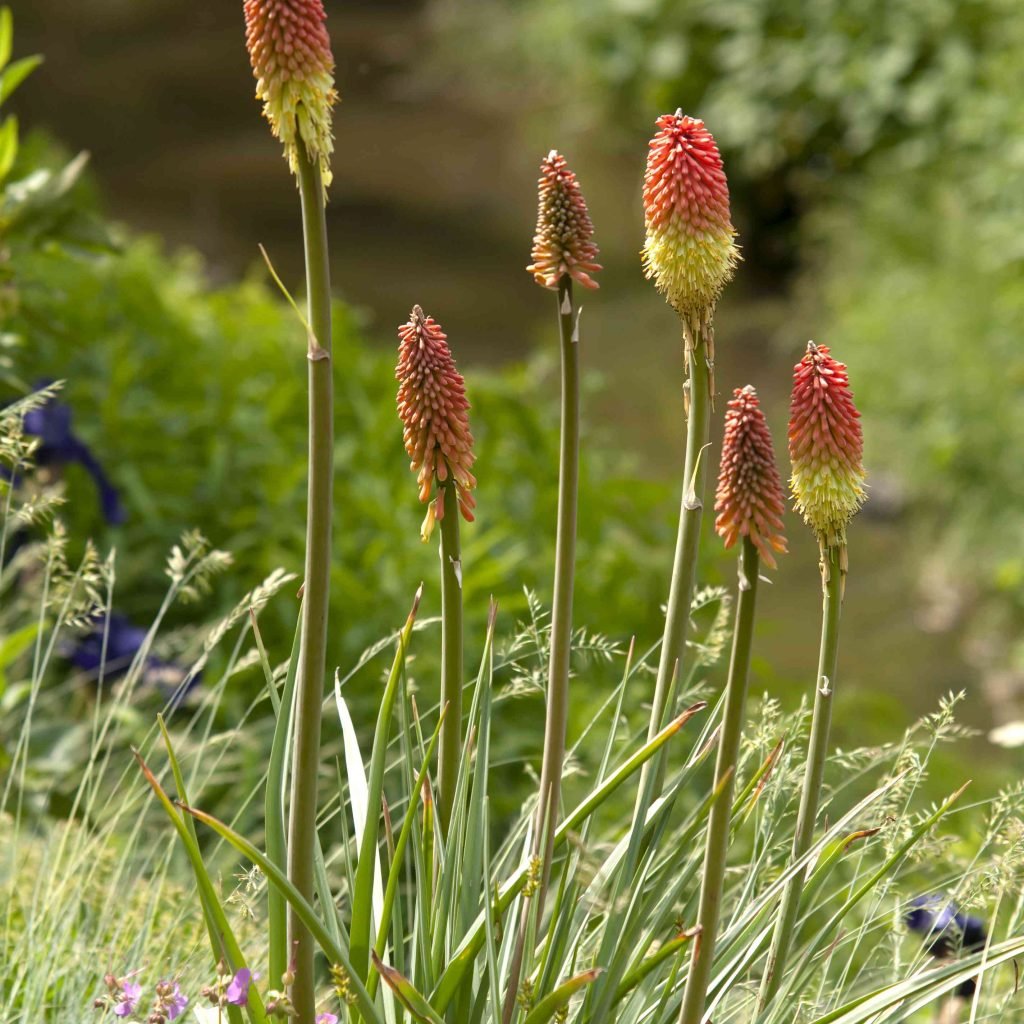
Kniphofia is a genus of perennial flowering plants belonging to the family of Asphodelaceae, native to Africa. The common names include Red Hot Poker, tritoma, poker plant, and torch lily.
This plant is named after a German botanist Johann Hieronymus Kniphofia and was first described as a genus in 1794. This poker plant has over 700 species around the world, and most of them are native to Africa. The plant is believed to be introduced to Europe in the 1700s. Since then, it has become popular among gardeners for its exotic flower colours and shape.
The red poker plant is an evergreen, bottle-brush-shaped flower produced in red, yellow, orange, and cream shades. These plants have non-succulent thin, and long leaves with tapering. The spike-like flowers are erect above the leaves in winter, blooming in spring and summer.
The vibrant and thick colours of the poker plant make a very dramatic and long-lasting display in the garden. These bright-coloured plants add a bold statement when planted as borders in the ground or lining the driveway. The plants grow up to 3 to 4 ft tall; since they are rhizomatous plants, they can grow aggressively when planted in favourable conditions.
Kniphofia attracts butterflies, bees, and some nectar-feeding birds, such as sun and sugar birds.
Growing Tips for a Red Poker Plant
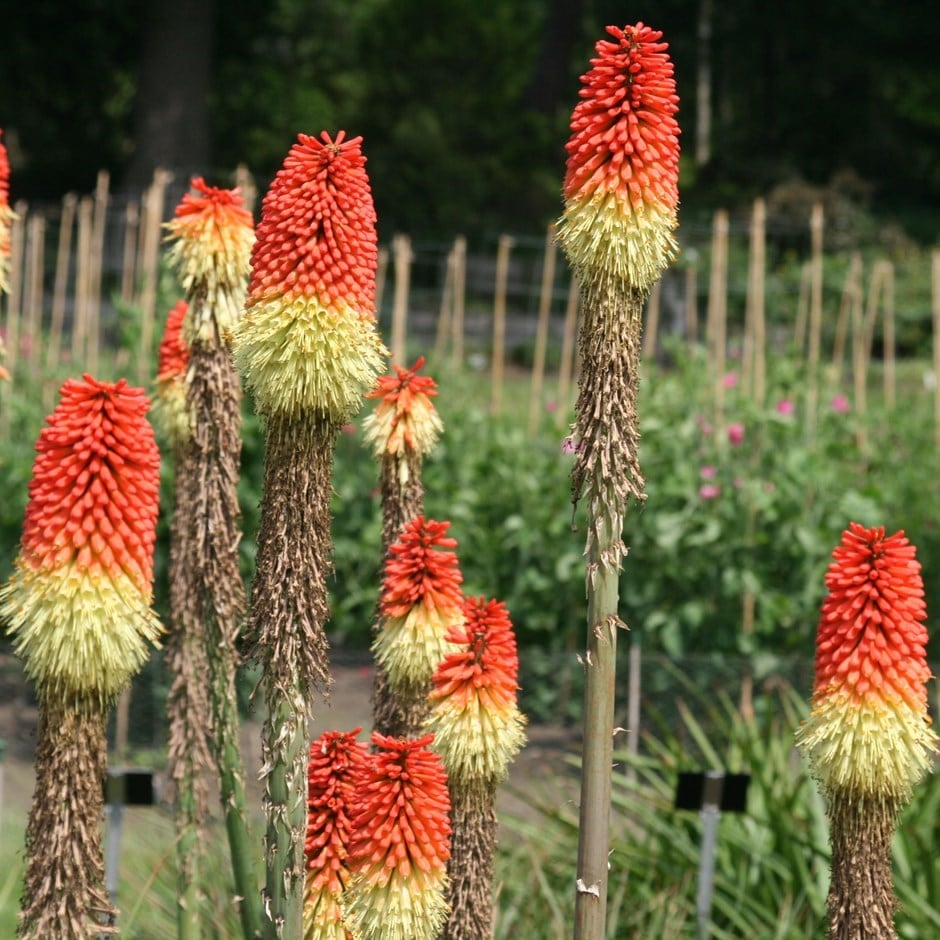
1. Soil
The red poker plant is an easy growing tough perennial that prefers to grow in deep, moist, well-drained, and fertile soil with neutral or acidic pH. These plants do not do well in damp soils in winter and are often susceptible to root rots if the soil is not well-drained.
Adding a handful of grit in the hole while planting the plant is recommended to allow free air circulation and avoid draining issues.
These plants are grown in containers also, which needs a little more attention. If you choose to transplant the plant from the nursery pot or to plant it in the container, make sure the soil is well equipped to the needs of the plant, like good drainage ventilation and organic matter-rich soil, before planting it in the containers.
Do not forget that Poker Plants are not a big fan of damp soil.
2. Light
Kniphofia blooms well in full sunlight and can even grow in partial shade in hot summer conditions. Though they can survive in partial shade, the flowering will be significantly reduced if they do not get enough sunlight.
3. Watering
Kniphofia is modest with its water requirements; they do not need much watering in winter. During hot summer and when grown in containers, water frequently.
These plants have an issue with root rots, so make sure the water is draining out properly by leaving sufficient moisture in the soil. Do not overwater the poker plants!
4. Propagation
Kniphofia can be propagated by seeds and division. Seeds do well if chilled before planting.
Propagating through seeds
Propagating a poker plant through seeds is a very tricky and time taking process. Here is a step-by-step process to help you propagate using seeds.
- The entire Kniphofia flower is filled with seeds, and as the flower begins to fade, cut the flower head.
- Let the flower dry thoroughly for 24 hours, and open the floret to collect the seeds.
- Refrigerate the seeds for one month; as already mentioned, chilled seeds do well as this is a built-in mechanism that will increase the chances of successful growth. This chilling purpose imitates the process of cold stratification, which triggers the process of germination in spring.
- Remove the seeds from the fridge, plant them in indoor conditions, and leave it for 6 to 8 weeks.
- As the plant develops tap roots deep into the soil, make sure you are choosing a pot that is several inches deep.
- Do not forget to maintain good quality soil in the pot and the temperature between 20 – 24 degrees Celsius; in favourable conditions, the seeds will germinate in 28 days to 30 days.
- Once you observe young leaves, carefully replant them in the garden or in a larger container and water the plant regularly.
Poker Plants are fussy about damp soils; make sure the water is draining properly.
Propagation through Division
This is the easiest way of propagation; all you have to do is separate the plant from the soil and remove the offset clumps and replant it immediately. Dividing right in the middle of the clamps can damage the roots and might stunt the plant’s growth and bloom.
Be gentle and careful while removing the clumps.
Caring for a Red-Hot Poker Plant
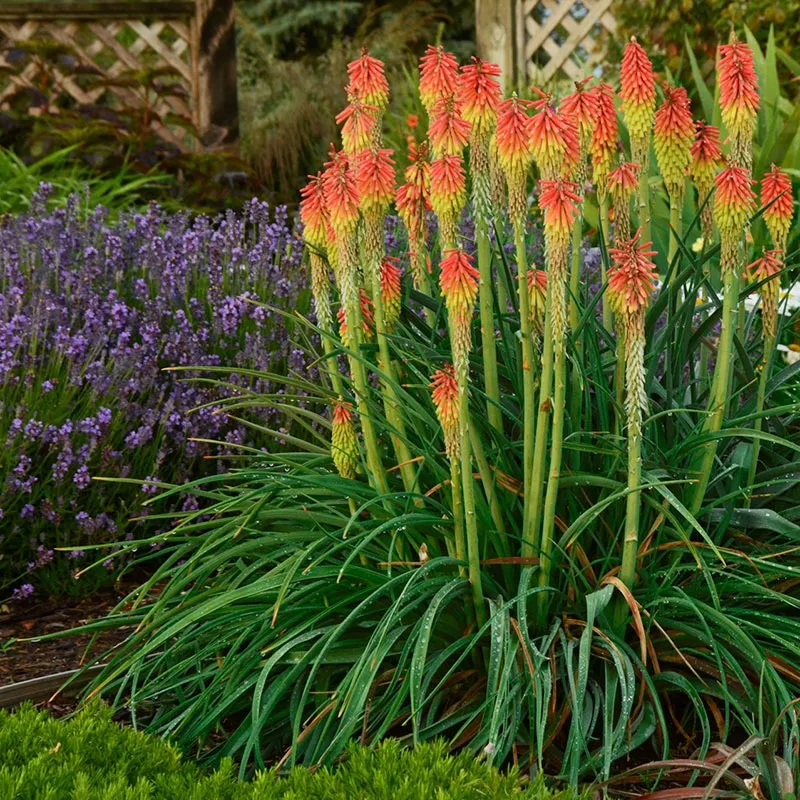
1. Proper Fertilizing
If planted in rich and nutritious soil, Kniphofia doesn’t need any extra fertilizers. If the plant is not flowering or planted in low fertile soil, add slow-releasing fertilizers to promote growth.
2. Overwintering
Overwintering is the process of protecting the plant from cold winter weather; this helps the plant to thrive and survive in the coming growing season. There are several techniques like bringing the plant indoors, reducing watering, pruning and fertilizing it if needed, cutting back and covering the plant with organic matter to protect it from frosting.
3. Pruning
Pruning does not need any pruning, but some gardeners remove dead leaves and spent flowers after the blooming season. But if you choose to prune, cut half an inch beneath the flower once it starts fading. Leaving faded flowers and dead stems can be a protection against winter for the natural habitat and also for the plant.
4. Mulching
If you are mulching your poker plant, do it around winter with organic matter or pebbles to protect the plant from colder temperatures, retain moisture and keep the pests away from the plant.
5. Pests & Diseases
Kniphofia is a relatively easy-to-care plant; other than root rots, there are no significant other diseases that can infect this plant. Look for snails, snugs and thrips. To avoid any other damage, ensure the water is not clogged and drained well.
Why is Your Red-Hot Poker Plant Not Flowering?
It is simply because your Kniphofia is not planted in favourable conditions. Remember that a poker plant needs full sunlight and shouldn’t be planted deeper than 3 inches to ensure air circulation. Remove the dead foliage and spend flowers in the fall. If your poker plant is still not flowering by spring, then it’s time to divide the clumps and make space to grow.
These plants can sometimes take a lot of time to settle in the soil, and they may not flower in the first year of planting.
Why Red-hot Poker Plant Is the Best Choice for Your Garden!
Kniphofia is a popular ornamental plant that not just makes the garden vibrant but also makes it lively with butterflies, hummingbirds, and bees. Here are some reasons why Kniphofia is the best choice for your outdoor or indoor space.
- Attractive Appearance – The striking appearance of tall spiky flowers makes excellent cut flowers, and the bright colours ranging from the red, orange, yellow, and light green can add beauty to any space.
- Low maintenance- The easy-to-grow and easy-to-care-for nature of this plant makes it a good choice even for beginners. Its tolerance to drought and less watering needs makes it a go-to plant for most gardeners.
- Long-Blooming period- The plant blooms in mid-summer through fall, i.e., starting June to July through September to October, providing colour to your garden for a longer time.
- Versatility – This plant can be planted in a variety of settings like garden borders, pathways, and rock gardens and can even be grown in containers. If you want to elevate the beauty of the plant, plant it alongside ornamental grass, purple-hued plants, or any contrast-colored flowering plants.
- Medical properties – The leaves of the red-hot poker plant have anti-inflammatory properties, which treat wounds, burns, and respiratory infections. This plant is believed to treat infertility in women in South Africa.
Conclusion
I hope through this blog you understood that the red poker plant is an exotic and attractive flowering plant that is versatile has low maintenance, has a long blooming period, and has the ability to attract pollinators, making this plant an attractive addition to the garden.
By following the instructions provided in this blog, one can grow a red poker plant effortlessly as an indoor plant or in an outdoor space. Remember to provide well-drained, rich, moist soil and position it under full sunlight to enjoy the full bloom of the red poker plant.
This fiery red poker beauty will make the best border plant and ornamental plant. This stunning beauty, for sure, is a showstopper!
Wait no more; now that you know everything about the red poker plant, plant them in your garden and see for yourself why this plant is so special!

![A Beginner’s Guide to Monstera ‘Swiss Cheese Plant’ [With Caring Tips]](https://staging.thearches.co.uk/wp-content/uploads/Monstera-Swiss-Cheese-Plant-Care-Tips.jpeg)
